Finding Cures for Radiologist Burnout
Experts presented various strategies for promoting physician well-being
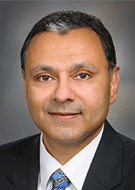
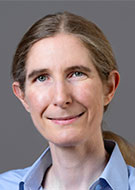
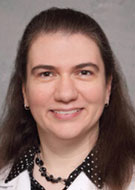
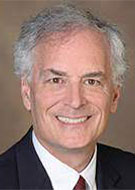
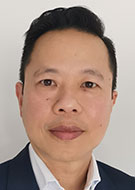
Studies have linked radiologist burnout to substance abuse, poor self-care and even physician suicide, noted Jay R. Parikh, MD, FRCPC, who moderated a session on mitigating burnout at RSNA 2024.
Dr. Parikh, a full professor of diagnostic radiology in the Division of Diagnostic Imaging at MD Anderson Cancer Center in Houston, has published several recent journal articles and studies on the subject. “The real question now is how do we shift the narrative and move from burnout to brilliance?” Dr. Parikh asked.
“Burnout is not a stagnant, fixed entity,” he said. “It is something that can be changed.”
Using Informatics to Optimize Efficiency
Digital technology offers many opportunities to help reduce burnout, according to Stacy O’Connor, MD, MPH, MMedSc, an abdominal radiologist and informatician. Dr. O’Connor is vice chair of innovation and full professor in the Department of Imaging Sciences at the University of Rochester Medical Center in New York.
Dorothy Sippo, MD, MPH, a breast radiologist and informatician, presented on behalf of Dr. O’Connor who was unable to attend RSNA 2024. She is vice chair of informatics for the Department of Radiology at Columbia University Vagelos College of Physicians and Surgeons in New York City.
According to their presentation, one way to reduce frustrations and reduce the time required to interpret exams is to optimize radiologists’ workstations. “It’s helpful to have a single sign on so that radiologists only need to input their username and password once, even though they use multiple applications,” Drs. O’Connor and Sippo said. “Ergonomic mice and headsets, as well as backlit keyboards can also increase efficiency and improve the working environment.”
In addition, Drs. O’Connor and Sippo advocate optimizing display protocols in PACS to reduce the time involved in organizing and linking series, and to make sure comparisons can be readily found. Shortcuts or macros for frequently performed tasks also facilitate image interpretation.
“Microservices can be helpful for creating an effective landing page for easy access to resources such as policies, protocols, phone numbers, paging directories, common references and on-call schedules,” Dr. O’Connor said.
Another way to help improve well-being is by finding better ways of communicating with fellow radiologists, technologists, nurses and others. Using a phone tree or call center can help minimize interruptions, as can using the electronic health record to message referring providers.

“We also need to take some of the routine and protocol-driven tasks out of the hands of humans,” Dr. O’Connor said. “Automating these kinds of tasks, when appropriate, can get radiologists back to what they love, including looking at and interpreting images, taking care of patients, teaching residents and helping referring providers.”
Drs. O’Connor and Sippo also highlighted the importance of having systems in place to help radiologists learn about their patients’ outcomes. Finding out the pathology results of a biopsy, for instance, can help a radiologist feel more engaged and can also provide learning opportunities.
“Automating these kinds of tasks, when appropriate, can get radiologists back to what they love, including looking at and interpreting images, taking care of patients, teaching residents and helping referring providers.”
—STACY O'CONNOR, MD, MPH, MMEDSC
How Radiology Leaders Can Help
It’s critical for leaders to support radiologists’ well-being, according to Frank J. Lexa, MD, MBA, an academic neuroradiologist who is a professor and vice chair for faculty affairs at the University of Pittsburgh. Dr. Lexa is also the chief medical officer of the Radiology Leadership Institute at the American College of Radiology and has published articles and studies on burnout.
“Burnout is real,” he said. “It can hurt you—and in some cases, it can even kill you.”
Dr. Lexa underscored the pivotal role that leadership plays, saying, “Leaders can destroy radiologists, or they can help them—it’s just that simple.”
According to Dr. Lexa, leaders must serve as good role models and help create a healthy working environment for radiologists. “You want to set expectations in a practice or department that are reasonable, and to advocate for quality, appropriate compensation and safety,” he said.
When Dr. Lexa talks to young radiologists about choosing a position at an institution, he advises them to find out whether the practice or department is actively working to help their physicians avoid burning out.
“Ask the questions, ‘Does your program, practice or department have a wellness committee and is it any good?’” he said.
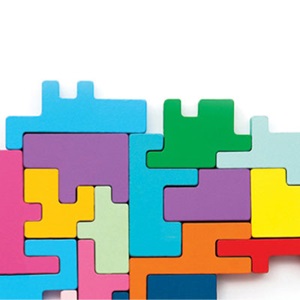
Widening the Scope of Wellness Efforts
Taking a broader approach to promoting physician well-being can have positive results, according to Teik Choon See, MD, a full-time consultant interventional radiologist at Cambridge University Hospitals (CUH) in England.
When Dr. See served as clinical director of his department, he spearheaded regular department sessions to create opportunities for raising questions or issues and finding solutions that help reduce stress. He is also involved in more far-reaching efforts to reduce burnout. Dr. See is co-chair of the Support and Wellbeing Working Group created by the Royal College of Radiologists (RCR).
One of the working group’s tasks is to recruit, train and endorse a pilot cohort of support and wellbeing champions to promote radiologist wellness at individual hospitals. The RCR, which offers resources for physician well-being via its website, issued a report that identified key drivers of stress and burnout as well as strategies for managing them, such as engaging in mindfulness and building personal resilience.
“More than 85% of the RCR’s members have reported burnout to a certain degree,” Dr. See noted. “We will focus on prevention, and on identifying the root causes and wider impact of stress. Our aim is to develop resources on support and well-being, and to promote a positive working culture.”
For More Information
Access previous RSNA News stories about radiologist well-being and burnout: